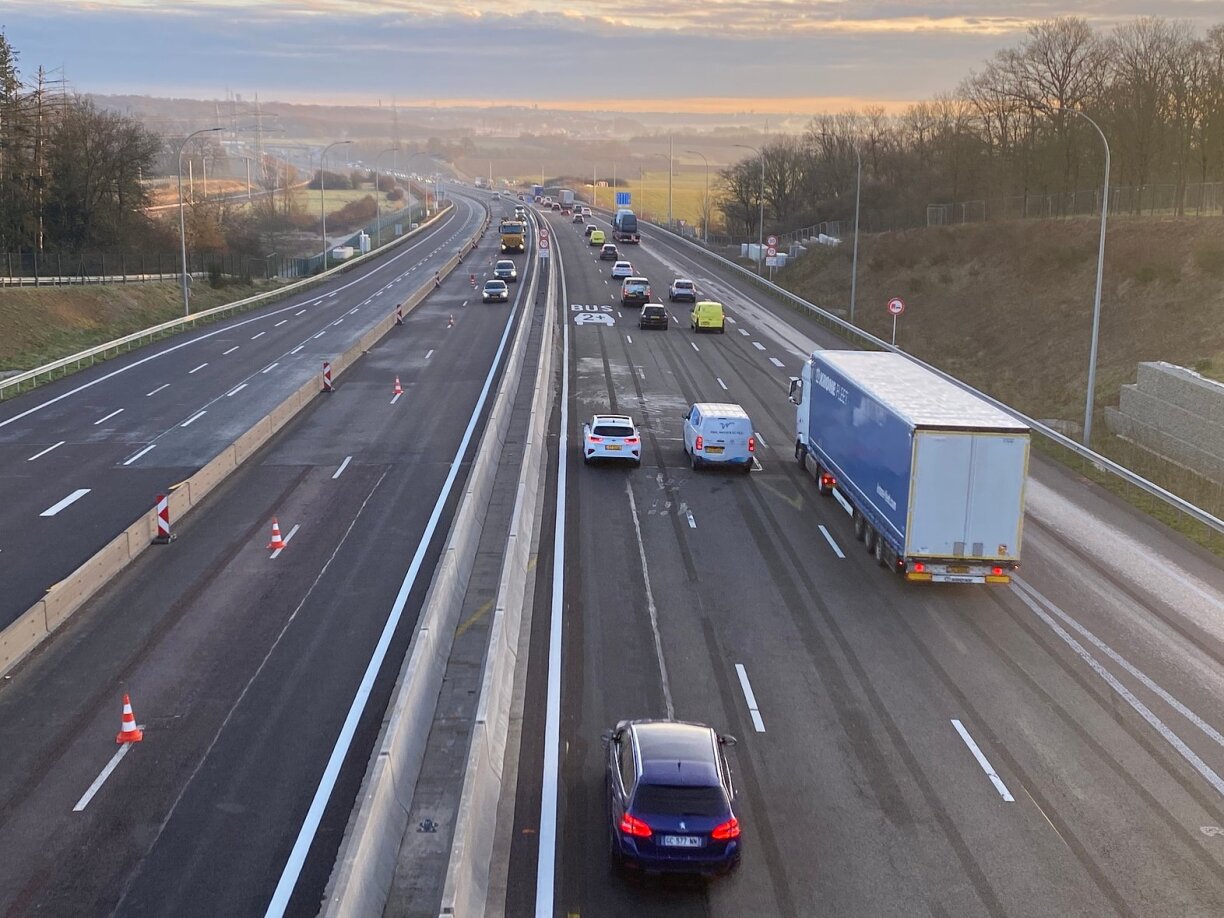
The massive project launched in January 2022 has severely tested the nerves of both local residents and cross-border commuters who travel to Luxembourg every day.
Originally set for the end of 2024, the project faced delays due to an error in the bidding process for the signal gantries, which support traffic and railway signals. The first section of the A3 motorway, now widened to 2x3 lanes between the Berchem service areas and the Gasperich cross, opened at midnight on Sunday, 23 March, Minister for Mobility and Public Works Yuriko Backes announced on Friday.
The 2x3 lane section will only be open in the Dudelange–Luxembourg direction on Sunday. In the other direction, towards France, the new section will not open until 30 March, a week later.
Monday morning was the first time the motorway has been in use, RTL reporter Christophe Hochard was at the scene and stated that everything was going well. At 8am – at peak time – around 4000 vehicles were on the road and a stop-and-go situation started to develop.
Work is currently underway on the side towards France, with panels being installed and road markings prepared. The 3.5km stretch between the Gasperich interchange and the Berchem service area is set to open to traffic on Sunday, 30 March.
Construction is also taking place on the elevated section between the Livange exit and the Bettembourg junction, with completion expected by 2028.
Motorists will have to wait until 2030 for the full 13km length of the A3 to be fully accessible.
The first change is that the left-hand lane of the three lanes will be reserved exclusively for carpooling and buses, 24 hours a day.
The second change is the maximum speed limit on the new section during rush hour. From Monday to Friday, the speed limit will be reduced to 70 km/h between 6 am and 11 am. The rest of the day, the speed limit will be set at 90 km/h.
The third new feature is the right-hand lane. This hard shoulder is reserved for buses. The speed limit there will be 70 km/h all the time.
With special regard to carpooling, Backes stressed the need to increase road capacity in a sustainable way, underscoring the importance of investing in multimodal mobility.
From Sunday 30 March, priority for carpooling and buses – accessible 24 hours a day – will also be introduced in the right-hand lane in the Luxembourg–France direction. The changeover from 3 to 2 lanes will take place via zipper merge, as will be indicated to motorists.
Here too, the maximum speed will be reduced on all lanes to 70 km/h during the return rush hour, i.e., from 3pm to 8pm. Under normal circumstances, the maximum authorised speed will be 90 km/h.
To use the new right-hand lane reserved for carpooling, a minimum of two people will need to be in the car. Roland Fox, Director of the National Roads Administration, explains that checks will be carried out on the new section to ensure that the new traffic rules are observed.
According to Fox, the police will be present during the initial stage, with later checks being carried out through the use of automatic systems in order to detect the number of people in a car. Fox further states that this system will then be integrated into the whole automatic surveillance and penalties system (CSA) of the Grand Ducal Police, as is already the case with speed cameras.
The enormous project of widening to 2x3 lanes the 13.3 km of motorway linking the Franco-Luxembourg border and the Gasperich cross is progressing, and should be completed by 2030.
Importantly, the €50 million budget for this 3.5 km section has been met.